Corsica, as it is known to Corsicans, is a beautiful, rugged, island off the coasts of France and Italy in the Mediterranean. For many years it was dominated by the Italians, and specifically, the Genoese. Ancient Genoese towers can be found around the island, positioned on the coasts to protect the towns inland. Many of the towns, really, small villages, sat atop citadels where the island’s inhabitants could look out for marauding Barbary pirates or whoever else was on their way to plunder or takeover the island. A proud people and never happy with the occupancy of another country, it wasn’t until a man named Pascal Paoli united his countrymen in the mid-1700’s that Corsica enjoyed several years of independence. Paoli was an extraordinarily enlightened man, whose constitution for his native island was largely copied by our nation’s founders as they were establishing their new nation. But Corsica was a much desired territory, and the French came across the Mediterranean to seize the island. Paoli and his armies fought bravely, but were largely overmatched by the French. In the final decisive battle in Ponte Novu, there are stories of the river running red with the blood of the Corsicans as thousands died for the cause. The French call the island Corse, and have called it theirs since. But the Corsicans have not forgotten their taste of independence, and to this day, agitate to get it back. The movement for independence flies under its own flag and the group supports activities as mundane as the blacking out of French names on road signs (Corsican names are also listed) and as violent as the firebombing of official French buildings.
My knowledge of the island comes from the Lonely Planet guide to Corsica, as well as from my guide, Priscilla, who has steeped herself in the lore, from our drives across the island and from those Corsicans I met on our trip. The first citadel (Citadelle) we saw was that of Calvi, in whose town we would spend our six days. Perched high atop the rock, from the citadel you can see the open sea, the harbor and the coast for several kilometers. The cathedral in the center of the citadel was the location for many of the concerts we attended during the week. On our fourth day on the island, we drove from Calvi east to Ile de Rousse, and then south through the countryside on our way to Corte, for a short time the capital of Corsica. The ride through the mountains was beautiful, with small enclaves of homes and farms few and far between on this harsh land. At one time in its history, Corsica was heavily farmed and provided the Genoese with much agricultural produce. But overtime, the land became tired, and today the island is more known for its cheese than its produce. Cows can be seen grazing on the hillsides and often, dangerously for motorists, wandering on the small winding roads.
We took a small detour on our trip to Corte to visit Ponte Novu, the scene of the decisive battle between the Corsicans and the French. The site has been renovated as a monument to that battle, and the broken bridge stands as a testament to that fight for freedom. Graffiti on a nearby post office illustrated how that the fight continues today.
A lunch stop in the town of Merusaglia, Pascal Paoli’s birthplace, showed to me again how the Corsicans are an amazing people. This incredibly inspired man grew up in a tiny hillside village perched overlooking the valley below. A visit on our fifth day to the village (pop. 200) of Ota was another example of the generosity and amiability of the Corsicans. Ota is actually the county seat, a few short kilometers from the seaside town of Porto (pop. 300). Porto is a tourist destination (the island now is largely dependent on tourists for income) and its population swells during the summer, but the small village of Ota is clearly just that, home to its inhabitants. In Ota, we had a leisurely lunch with a family in which Priscilla has become an adopted member. Over a lunch of fattiglia, salad nicoise, pasta and cheese, we talked about music, politics, the weather, and family news. Afterward Antoine took us to meet Andre, another family member, in the café down the hill for an espresso and more catching up, as we looked across the mountains and watched another rainfall come and go.
Our trip to Corte on day four was to see Rosanna, the female member of the Alte Voce singing group. A vibrant and intense woman, she served us cranberry juice cocktail and her cookies as she listened to us tell of our musical moments at the festival and she shared her own stories of the political situation in Corsica (Sarkozy’s political influence is felt even on this island), neighborhood news and her family updates. I was touched during our visit because she spoke to me in French and listened as I tried to express myself to her in French as well. Priscilla's "family" was equally as patient with me. Priscilla has been learning Corsican, and tried her new language during our visits as well, to great approval from her listeners. Rosanna engaged me through a culinary discussion, in which I gave her the recipe for chocolate chip cookies and she gave me the recipe for the traditional Canistrelli sugar cookies that she makes regularly (but she cautioned would not come out as desired in my electric oven!).
On our trip to Ota, I picked up some traditional Corsican cheese, known for its rich taste and pungent smell, and some Corsican wine from a local grocery. Each region of Corsica makes its own wine, and while it is not widely distributed, it is eminently drinkable. I was able to taste both the cheese and wine over our lunch with Williams and Françoise and their extended family.
Other gastronomy specific to Corsica includes the fattiglia sausage, which is made from wild boars who graze on the chestnuts in the woods, and has a very intense taste. Chestnut trees are all over the island, and it is a traditional activity for families to go into the woods in the fall to harvest the chestnuts, which are used for their nuts as well as ground into chestnut flour. I tasted a chestnut cake one evening at a local café while we were waiting for our next concert to start – the flavor, as Priscilla likes to say, is like bacon fat. The cake was quite tasty! During our cheese course at lunch that day, we were also treated to a homemade marmalade of watermelon and walnuts, made by Williams' mother, Nicole. Priscilla was so complementary (and it was a lovely combination), that we both were given jars to take home with us. I found in my fridge here in my apartment an incredible jar of marmalade made from Corsican clementines, which Priscilla tells me is also an island specialty. Priscilla also brought me a gift of almonds (both fresh and roasted) harvested from the countryside, after her trek to the desert on the northern coast.
Corsica is an island with a complicated history, wonderful food, and engaging and spirited people. And a rich musical heritage too. More on that in the next posting.
Tuesday, September 16, 2008
Subscribe to:
Post Comments (Atom)
































































































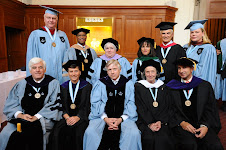






























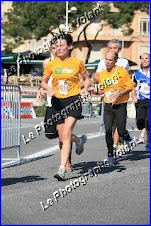
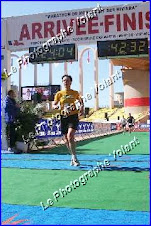









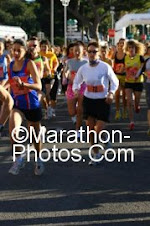
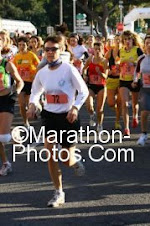









































No comments:
Post a Comment